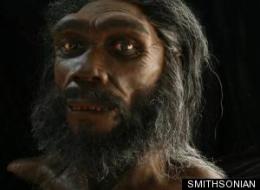Siberia's Denisova cave held the pinky bone of an unknown early human species, a genetics team reported in March. The Naturejournal study, led by Johannes Krause of Germany's Max Planck Institute for Evolutionary Anthropology, offered no answer for what happened to this "archaic" human species, more than one million years old and living near their human and Neanderthal cousins as recently as 30,000 years ago. More on Evolution
'wild People' Were Species Of Early Human, Speculates Folklorist Michael Heaney
The Huffington Post News Editors, Huffington Post
Sat, 06/19/2010 - 9:00pm
RELATED ARTICLES
- CSI Jamestown: Anthropologists lay out evidence of colonial cannibalism
Experts have provided the grisly goods to back up 17th-century accounts of cannibalism during the Jamestown colony's "starving time" — including a skull that shows signs of being chopped at and pried apart. "Our team has discovered partial human remains before, but the location of the discovery, visible damage to the skull and marks on the bones immediately made us realize this finding was unusual," Bill Kelso, chief archaeologist of the Jamestown Rediscovery Project in Virginia, said in a news release issued Wednesday. More - Coelacanth DNA May Tell How Fish Learned to Walk
In the hope of reconstructing a pivotal step in evolution — the colonization of land by fish that learned to walk and breathe air — researchers have decoded the genome of the coelacanth, a prehistoric-looking fish whose form closely resembles those seen in the fossils of 400 million years ago. More - Scientists gain insight into long-extinct South African creature that had mix of human, apelike traits
A series of studies released today show that a long-extinct South African creature had an intriguing mix of human and apelike traits. But scientists say they still haven’t figured out where it fits on our evolutionary family tree. The human branch of the evolutionary tree, called Homo, is thought to have arisen from a group of ancient species called australopithecines. More - Birds might be evolving to dodge vehicles
Does a new study offer a bird's-eye view into evolution? Fewer cliff swallows are being killed by moving vehicles because of evolution, suggests a study published online today in the journal Current Biology. "These birds have been exposed to vehicles and roads for 30-plus years," says Charles Brown, the study's lead author. More - What killed Neanderthals? Blame those rascally rabbits
Neanderthals were big game hunters who feasted on mammoth and rhino but didn’t or couldn’t eat smaller, leaner meat. More



